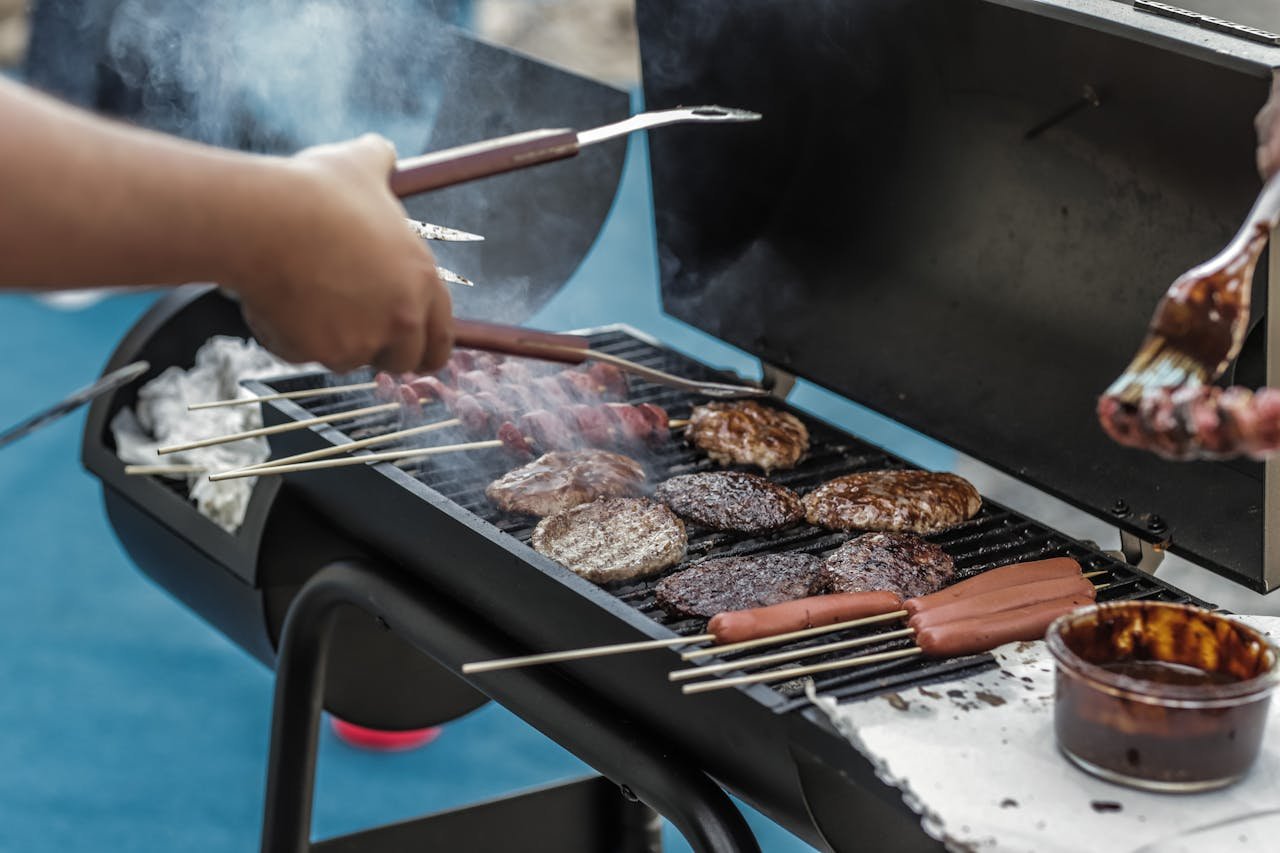Are you someone who loves to entertain guests and impress them with mouthwatering grilled delicacies? If so, an outside built-in grill might be the perfect addition to your outdoor living space. These grills offer a range of benefits that make them a popular choice among homeowners who enjoy alfresco dining and hosting backyard gatherings.
Types of outside built-in grills
When it comes to outside built-in grills, there are several types to choose from, each with its own unique features and benefits. The three main types of outside built-in grills are gas, charcoal, and electric.
Gas Grills: Gas grills are the most popular choice for outside built-in grills. They offer quick and easy ignition, precise temperature control, and consistent heat distribution, making them a favorite among both experienced and novice grillers. Gas grills are fueled by either natural gas or propane, and they typically offer a wide range of BTU (British Thermal Unit) outputs, allowing you to sear, grill, and even smoke your favorite meats and vegetables with ease.
Charcoal Grills: For those who prefer the authentic smoky flavor of
charcoal-grilled food, an outside built-in charcoal grill is an excellent option. These grills offer a more hands-on grilling experience, allowing you to control the heat and smoke levels by adjusting the airflow and the placement of the charcoal. Charcoal grills are often praised for their ability to impart a unique and delicious flavor to your grilled dishes, making them a popular choice among passionate grillers.
Electric Grills: While not as common as gas or charcoal grills, electric outside built-in grills are a convenient and environmentally-friendly option. These grills are powered by electricity, eliminating the need for propane tanks or charcoal. They offer precise temperature control and are often easier to clean and maintain than their gas or charcoal counterparts. Electric grills are a great choice for those who prioritize convenience and want to reduce their carbon footprint.
Factors to consider when choosing an outside built-in grill
When it comes to selecting an outside built-in grill, there are several important factors to consider to ensure you make the right choice for your outdoor living space and cooking needs.
Size and Cooking Area: The size of your outside built-in grill and the available cooking area are crucial factors to consider. Measure the space you have available in your outdoor kitchen or patio area and choose a grill that fits seamlessly without overwhelming the space. Consider the number of guests you typically entertain and the size of the meals you plan to prepare to determine the appropriate cooking surface area.
Material and Construction: The materials used in the construction of an outside built-in grill can significantly impact its durability, performance, and maintenance requirements. Common materials include stainless steel, cast aluminum, and cast iron. Stainless steel is a popular choice due to its rust-resistance and easy cleaning, while cast aluminum and cast iron offer excellent heat retention and distribution properties.
Fuel Type: As mentioned earlier, the three main fuel types for outside built-in grills are gas, charcoal, and electric. Each fuel type has its own advantages and disadvantages, so it’s essential to consider your personal preferences, cooking style, and the available fuel sources in your area. Gas grills offer convenience and precise temperature control, while charcoal grills provide a unique smoky flavor. Electric grills are a clean and environmentally-friendly option, but may lack the intense heat and searing capabilities of gas or charcoal.
Additional Features: Many outside built-in grills come equipped with a variety of additional features that can enhance your grilling experience. These may include side burners for sautéing or simmering, rotisserie kits for slow-roasted meats, infrared burners for intense searing, and built-in storage or shelves for your grilling tools and accessories.
Brand Reputation and Warranty: When investing in an outside built-in grill, it’s important to consider the reputation of the brand and the warranty coverage they offer. Research reviews, ratings, and customer feedback to ensure you’re choosing a high-quality product from a reputable manufacturer. A comprehensive warranty can provide peace of mind and protect your investment against any potential issues or malfunctions.
Installation process of an outside built-in grill
The installation of an outside built-in grill is a crucial step that requires careful planning and execution. While the specific installation process may vary depending on the grill model and the construction of your outdoor living space, there are some general steps to keep in mind.
Site Preparation: Before installing your outside built-in grill, it’s essential to prepare the site. This may involve constructing a sturdy and level foundation, such as a concrete pad or a masonry structure, to support the weight of the grill and ensure a stable and secure installation. Ensure that the site is easily accessible and provides ample space for maneuvering and connecting the necessary utilities, such as gas lines or electrical outlets.
Utility Connections: Depending on the fuel type of your outside built-in grill, you’ll need to connect it to the appropriate utility source. For gas grills, this may involve running a natural gas line or connecting a propane tank. Electric grills will require a dedicated electrical circuit and the proper wiring. It’s recommended to have a licensed and experienced professional handle the utility connections to ensure safety and compliance with local building codes.
Grill Placement and Framing: Once the site is prepared, the next step is to carefully position and secure the grill in its designated location. This may involve building a custom frame or enclosure to integrate the grill seamlessly into your outdoor kitchen or patio design. Proper placement and framing are crucial for both the aesthetic appal and the functional performance of the grill.
Finishing Touches: After the grill is installed and connected to the necessary utilities, you can add the finishing touches to your outside built-in grill setup. This may include installing any desired side shelves, storage cabinets, or other accessories to enhance the functionality and convenience of your grilling station. Additionally, you may want to consider adding decorative elements, such as tile or stone, to create a cohesive and visually appealing outdoor living space.
Permits and Inspections: Depending on your local building codes and regulations, you may need to obtain the necessary permits and have your outside built-in grill installation inspected by a local authority. It’s essential to research and comply with all relevant regulations to ensure the safety and legality of your grill installation.
Conclusion
By now, you should have a thorough understanding of outdoor grills. Hopefully, you should be more comfortable and be able to find the grill of your dreams!
Read More: https://thereaderstone.com/
Refresh Date: August 21, 2025










